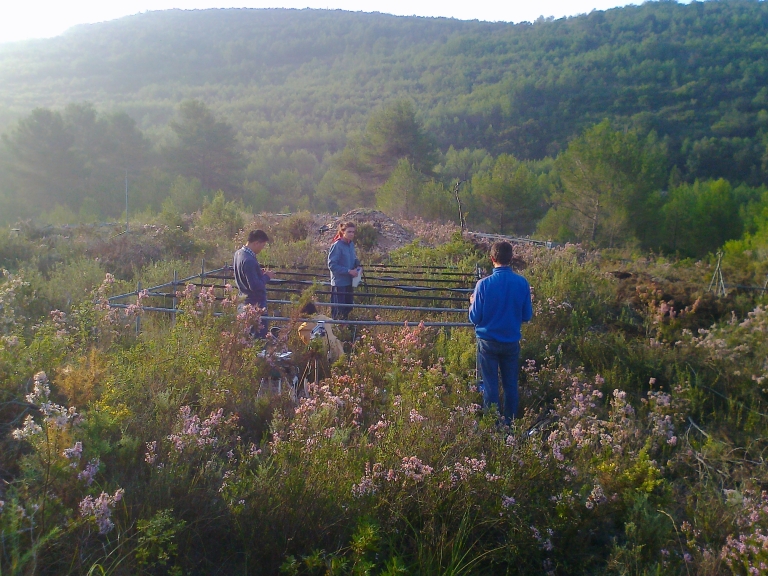Unlocking the patterns of climate change
Last updated: 12 Dec, 2017
How will plant species respond to climate change?
Amid thickets of fragrant rosemary and thyme, researchers from the University of Tübingen have developed a technique that will help to answer this question. Dr Mark Bilton and Professor Katja Tielbörger, from the Institute of Evolution and Ecology, reanalysed data with Spanish collaborators from their unprecedented 16-year experiment.

Automatic shelters used to alter either precipitation or temperature in Garraf National Park near Barcelona. Courtesy of Josep Peñuelas.
In the study the scientists showed that, within a region, the relative rate and direction of plant response to a changed climate can be directly related to where and which climates the species occur in more frequently.
By finding that responses were directly related to where the species originally occur, predictions can be extended to future climate change scenarios. “The technique is logical, but also surprisingly revealing”, said Dr Mark Bilton, who has been using the same method to study plant responses in Israel. “It allows us to compare the rate of change of species within a habitat, but also between habitats”.
Continue reading on the New Phyt blog.
Read the paper: Liu, D., Peñuelas, J., Ogaya, R., Estiarte, M., Tielbörger, K., Slowik, F., Yang, X. and Bilton, M. C. (2017) Species selection under long-term experimental warming and drought explained by climatic distributions. New Phytologist. doi: 10.1111/nph.14925
Mike Whitfield (@mgwhitfield)
Development Coordinator
New Phytologist